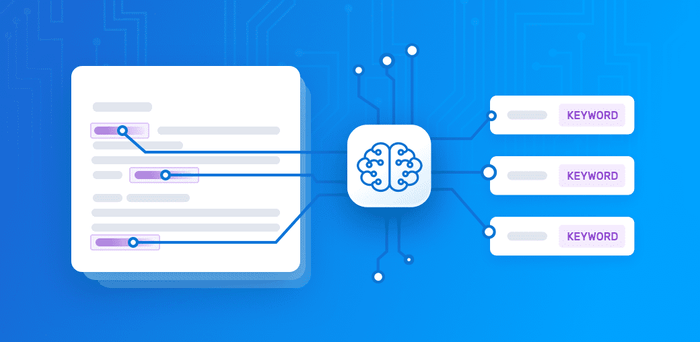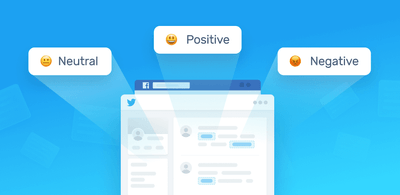Semantic Analysis, Explained

For humans, making sense of text is simple: we recognize individual words and the context in which they’re used. If you read this tweet:
"Your customer service is a joke! I've been on hold for 30 minutes and counting!"
You understand that a customer is frustrated because a customer service agent is taking too long to respond.
However, machines first need to be trained to make sense of human language and understand the context in which words are used; otherwise, they might misinterpret the word “joke” as positive.
Powered by machine learning algorithms and natural language processing, semantic analysis systems can understand the context of natural language, detect emotions and sarcasm, and extract valuable information from unstructured data, achieving human-level accuracy.
Read on to learn more about semantic analysis and how it can help your business:
What Is Semantic Analysis?
Simply put, semantic analysis is the process of drawing meaning from text. It allows computers to understand and interpret sentences, paragraphs, or whole documents, by analyzing their grammatical structure, and identifying relationships between individual words in a particular context.
It’s an essential sub-task of Natural Language Processing (NLP) and the driving force behind machine learning tools like chatbots, search engines, and text analysis.
Semantic analysis-driven tools can help companies automatically extract meaningful information from unstructured data, such as emails, support tickets, and customer feedback. Below, we’ll explain how it works.
How Semantic Analysis Works
Lexical semantics plays an important role in semantic analysis, allowing machines to understand relationships between lexical items (words, phrasal verbs, etc.):
Hyponyms: specific lexical items of a generic lexical item (hypernym) e.g. orange is a hyponym of fruit (hypernym).
Meronomy: a logical arrangement of text and words that denotes a constituent part of or member of something e.g., a segment of an orange
Polysemy: a relationship between the meanings of words or phrases, although slightly different, share a common core meaning e.g. I read a paper, and I wrote a paper)
Synonyms: words that have the same sense or nearly the same meaning as another, e.g., happy, content, ecstatic, overjoyed
Antonyms: words that have close to opposite meanings e.g., happy, sad
Homonyms: two words that are sound the same and are spelled alike but have a different meaning e.g., orange (color), orange (fruit)
Semantic analysis also takes into account signs and symbols (semiotics) and collocations (words that often go together).
Automated semantic analysis works with the help of machine learning algorithms.
By feeding semantically enhanced machine learning algorithms with samples of text, you can train machines to make accurate predictions based on past observations. There are various sub-tasks involved in a semantic-based approach for machine learning, including word sense disambiguation and relationship extraction:
Word Sense Disambiguation
The automated process of identifying in which sense is a word used according to its context.
Natural language is ambiguous and polysemic; sometimes, the same word can have different meanings depending on how it’s used.
The word “orange,” for example, can refer to a color, a fruit, or even a city in Florida!

The same happens with the word “date,” which can mean either a particular day of the month, a fruit, or a meeting.

In semantic analysis with machine learning, computers use word sense disambiguation to determine which meaning is correct in the given context.
Relationship Extraction
This task consists of detecting the semantic relationships present in a text. Relationships usually involve two or more entities (which can be names of people, places, company names, etc.). These entities are connected through a semantic category, such as “works at,” “lives in,” “is the CEO of,” “headquartered at.”
For example, the phrase “Steve Jobs is one of the founders of Apple, which is headquartered in California” contains two different relationships:


Semantic Analysis Techniques
Depending on the type of information you’d like to obtain from data, you can use one of two semantic analysis techniques: a text classification model (which assigns predefined categories to text) or a text extractor (which pulls out specific information from the text).
Semantic Classification Models
- Topic classification: sorting text into predefined categories based on its content. Customer service teams may want to classify support tickets as they drop into their help desk. Through semantic analysis, machine learning tools can recognize if a ticket should be classified as a “Payment issue” or a “Shipping problem.”
- Sentiment analysis: detecting positive, negative, or neutral emotions in a text to denote urgency. For example, tagging Twitter mentions by sentiment to get a sense of how customers feel about your brand, and being able to identify disgruntled customers in real time.
- Intent classification: classifying text based on what customers want to do next. You can use this to tag sales emails as “Interested” and “Not Interested” to proactively reach out to those who may want to try your product.
Semantic Extraction Models
- Keyword extraction: finding relevant words and expressions in a text. This technique is used alone or alongside one of the above methods to gain more granular insights. For instance, you could analyze the keywords in a bunch of tweets that have been categorized as “negative” and detect which words or topics are mentioned most often.
- Entity extraction: identifying named entities in text, like names of people, companies, places, etc. A customer service team might find this useful to automatically extract names of products, shipping numbers, emails, and any other relevant data from customer support tickets.
Automatically classifying tickets using semantic analysis tools alleviates agents from repetitive tasks and allows them to focus on tasks that provide more value while improving the whole customer experience.
Tickets can be instantly routed to the right hands, and urgent issues can be easily prioritized, shortening response times, and keeping satisfaction levels high.
Insights derived from data also help teams detect areas of improvement and make better decisions. For example, you might decide to create a strong knowledge base by identifying the most common customer inquiries.
Conclusion
When combined with machine learning, semantic analysis allows you to delve into your customer data by enabling machines to extract meaning from unstructured text at scale and in real time.
Powerful semantic-enhanced machine learning tools will deliver valuable insights that drive better decision-making and improve customer experience.
MonkeyLearn makes it simple for you to get started with automated semantic analysis tools. Using a low-code UI, you can create models to automatically analyze your text for semantics and perform techniques like sentiment and topic analysis, or keyword extraction, in just a few simple steps.
Request a personalized demo from our experts and get started right away!

Rachel Wolff
August 12th, 2020






